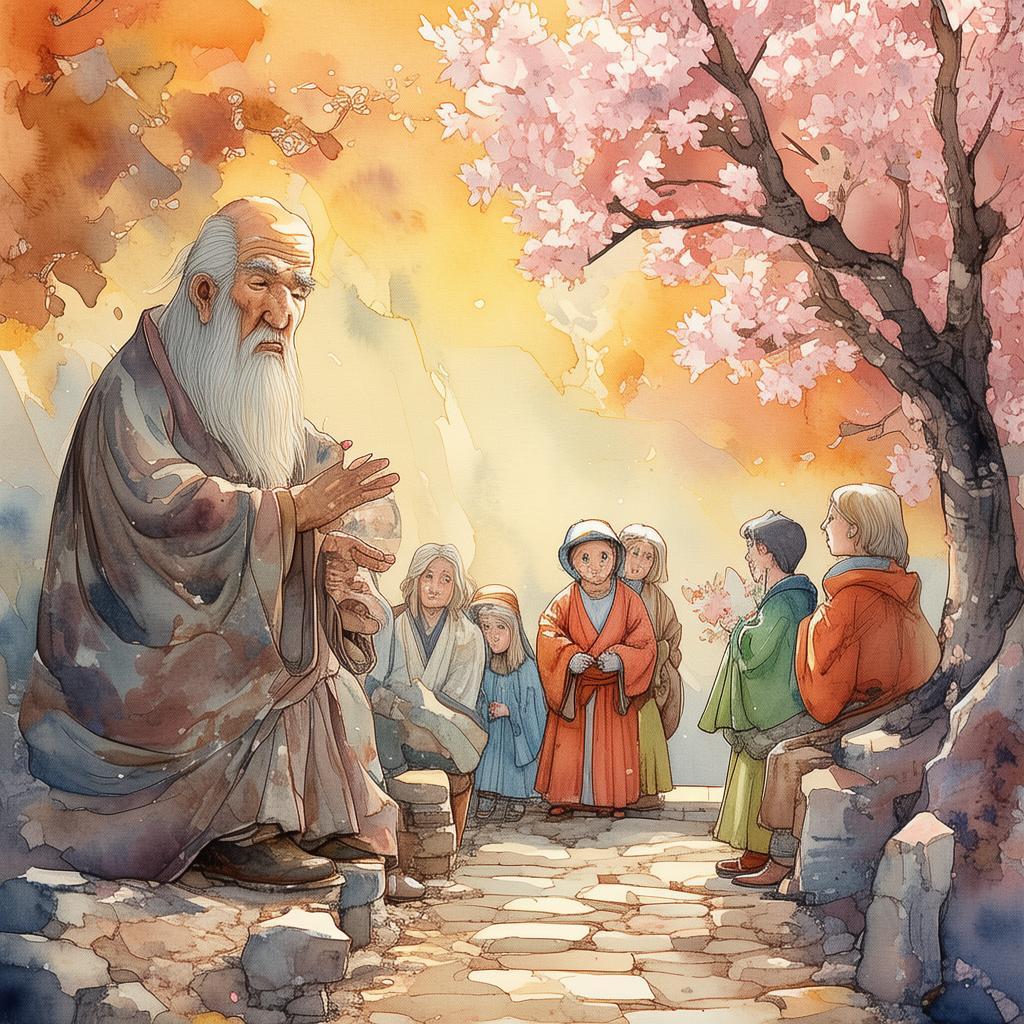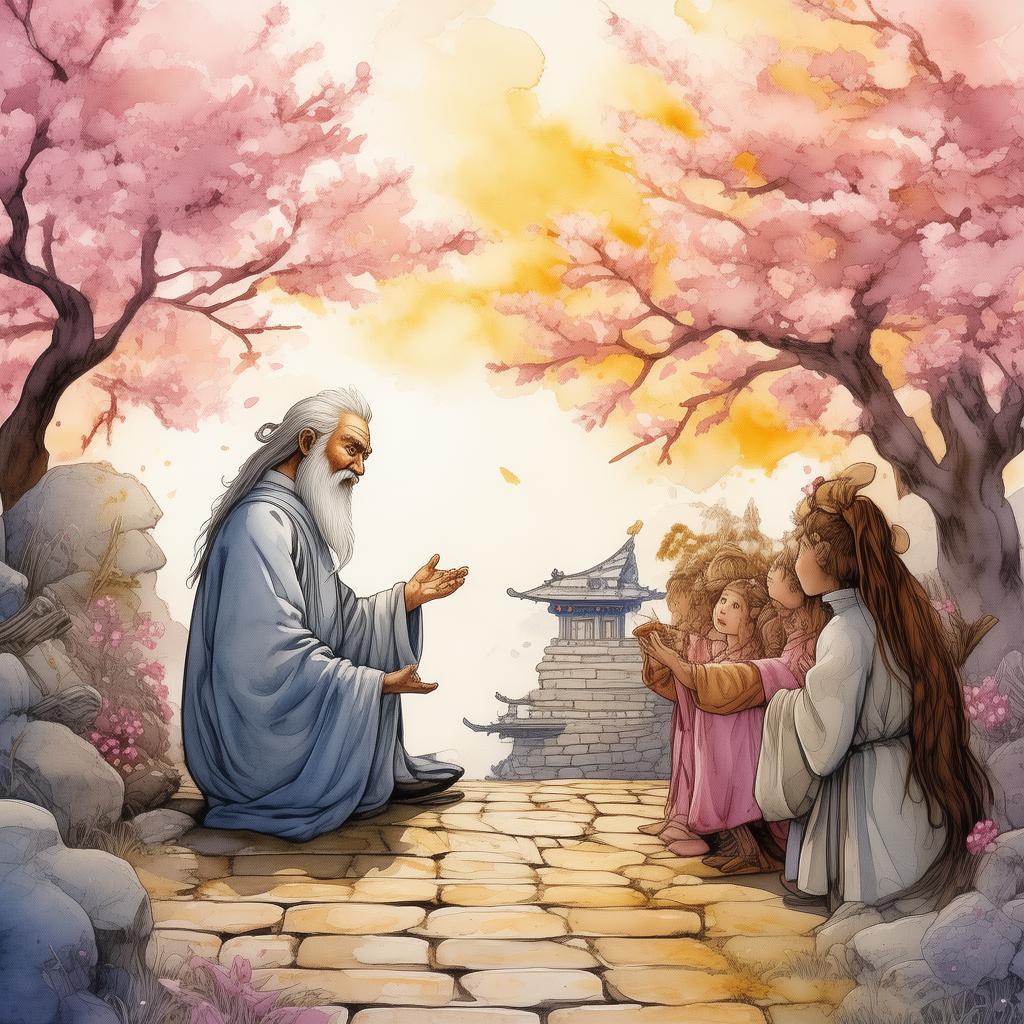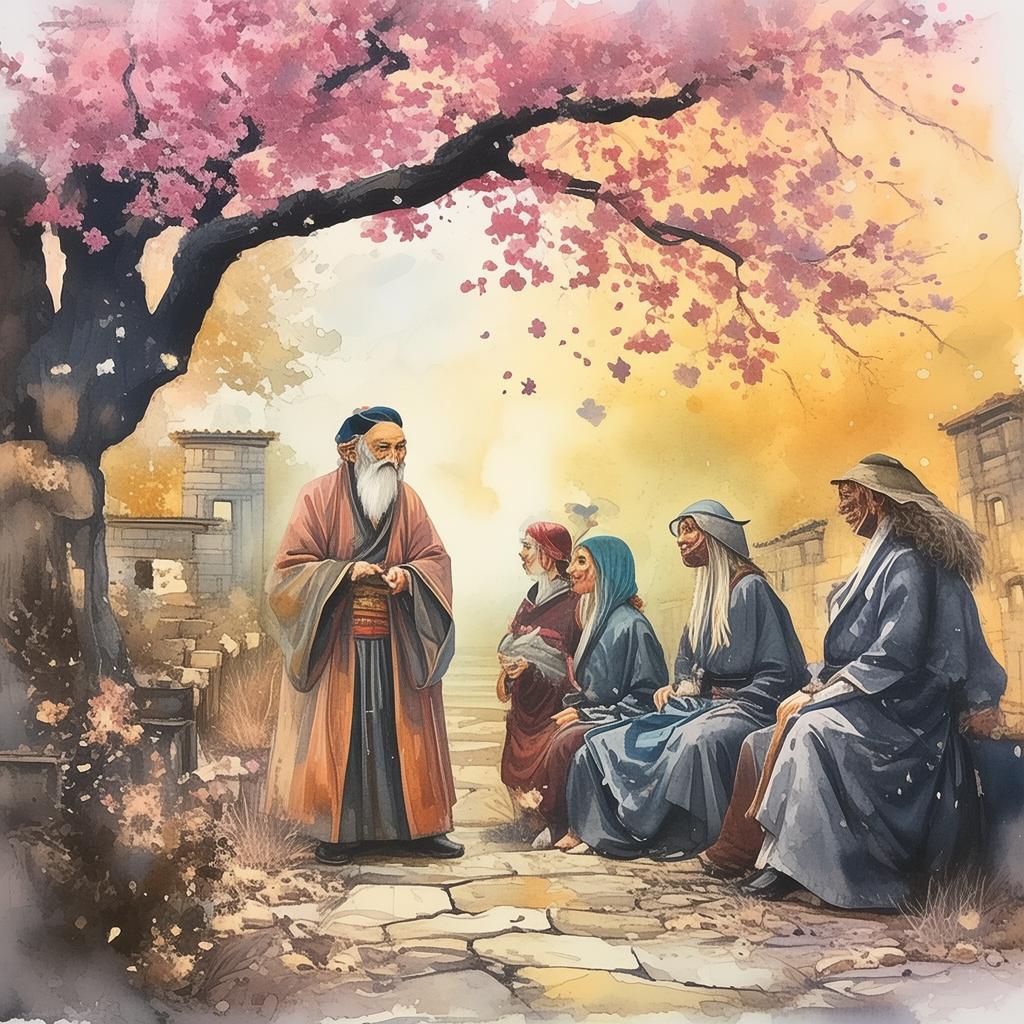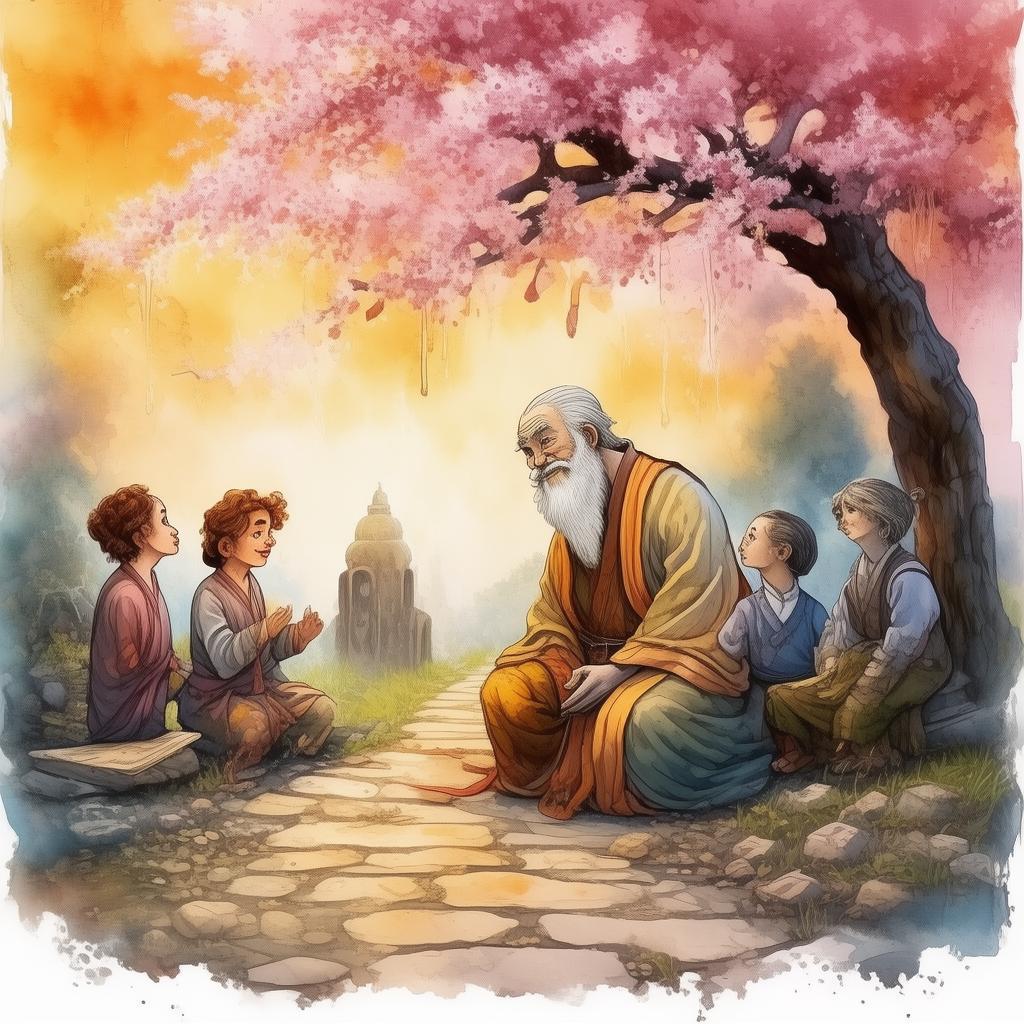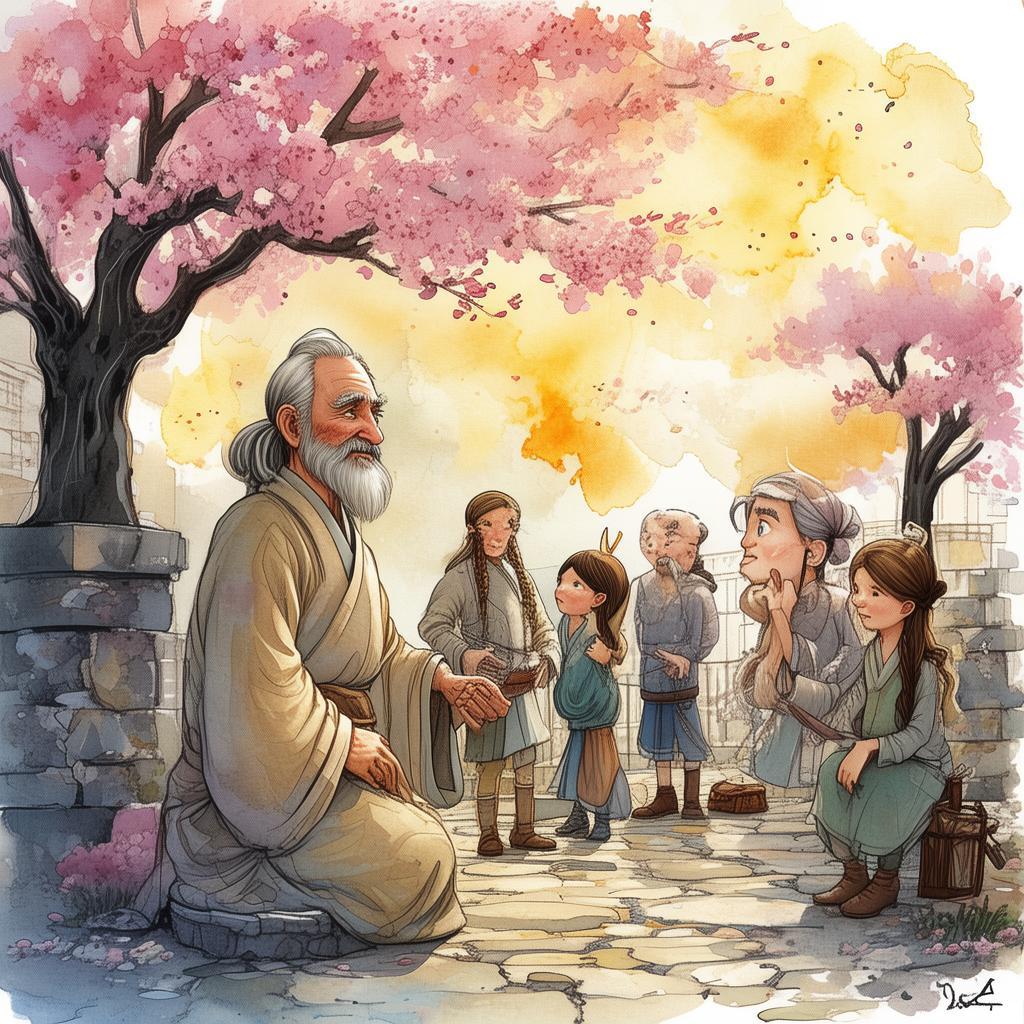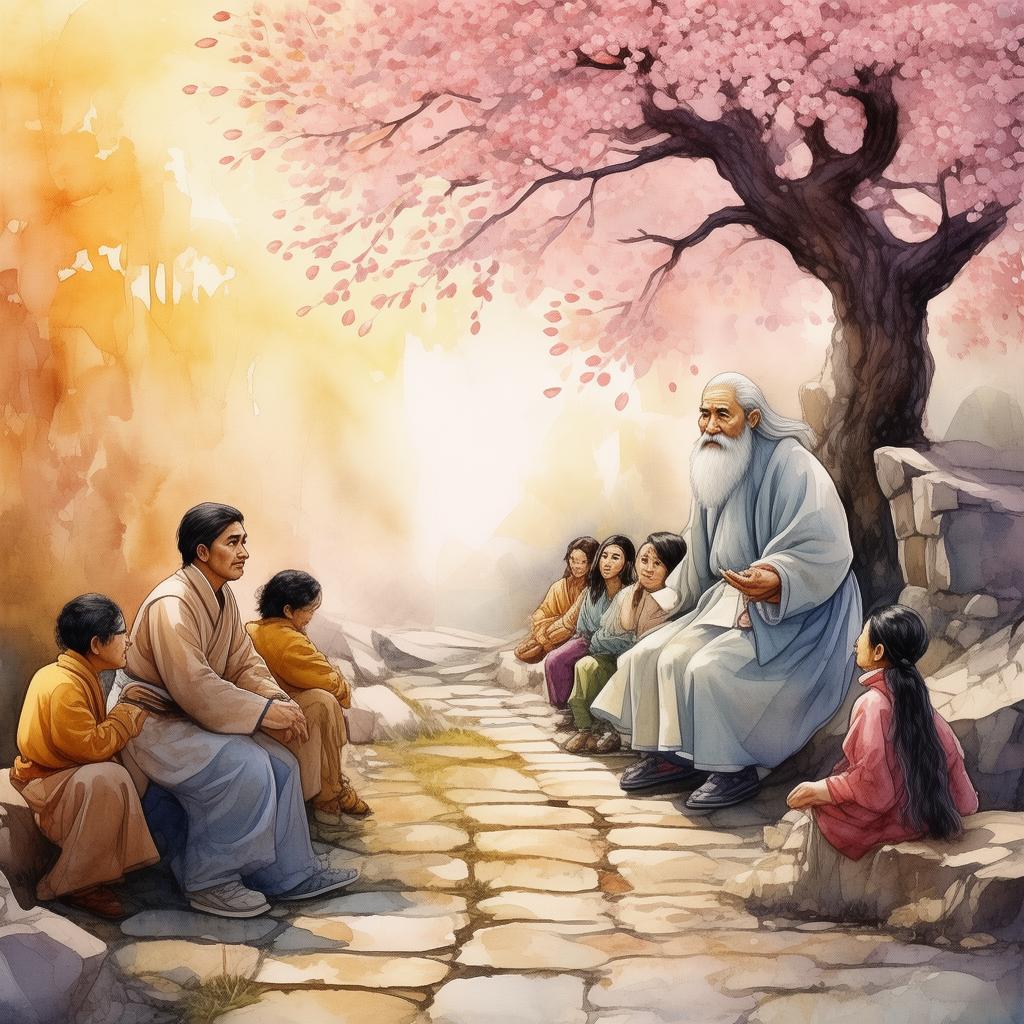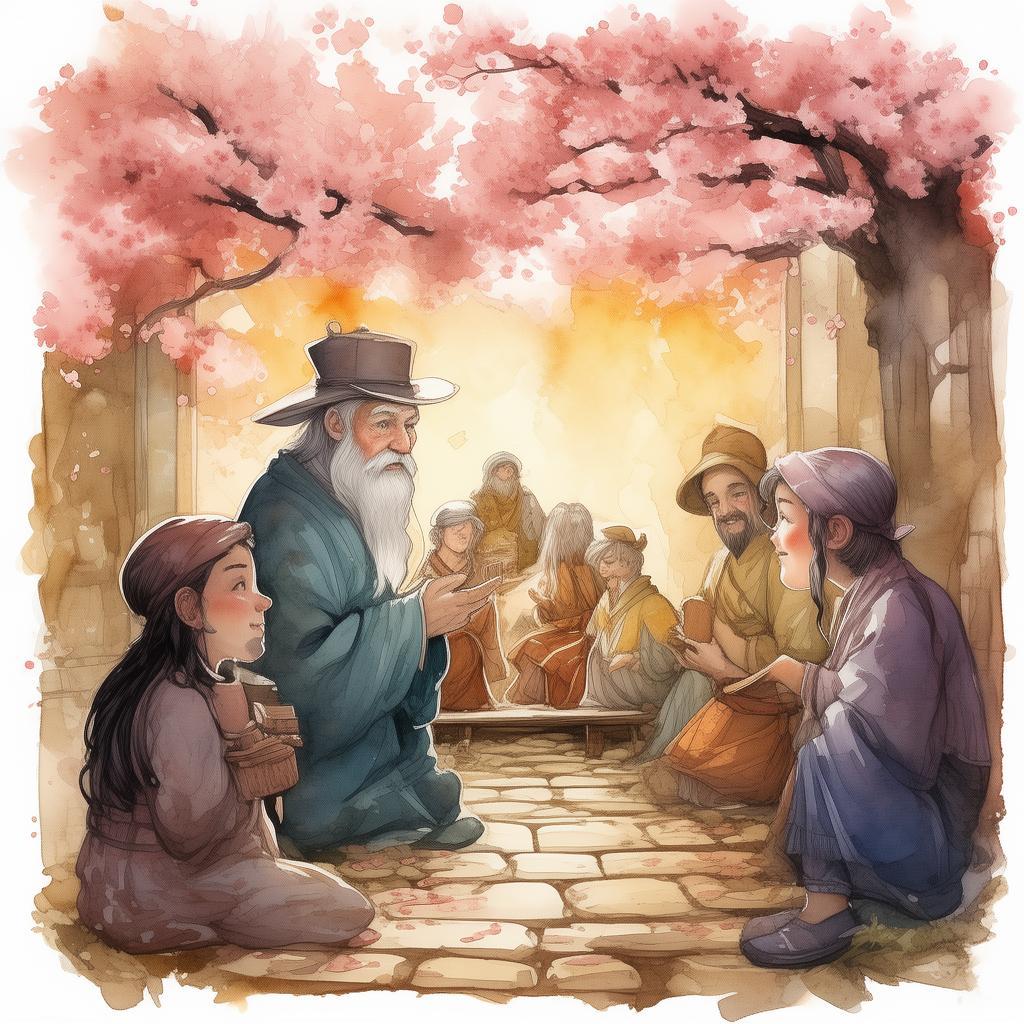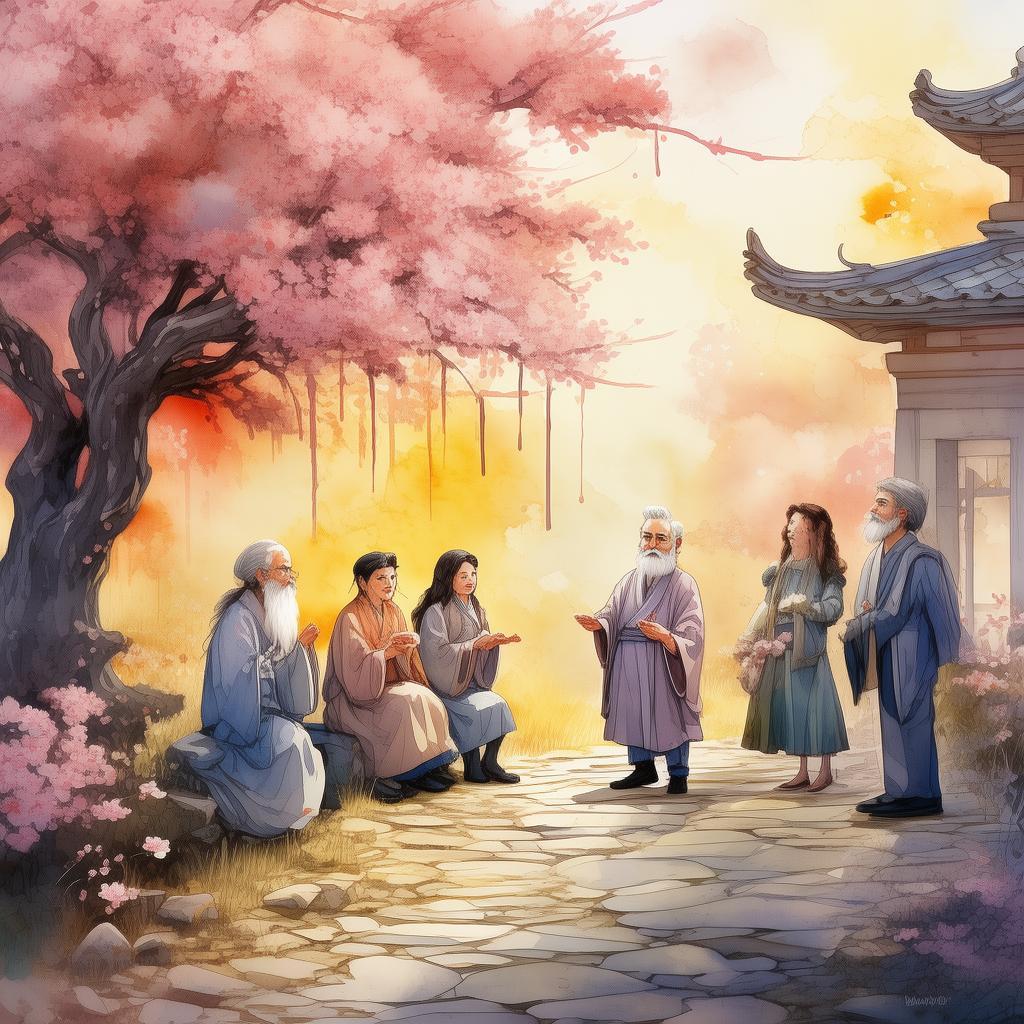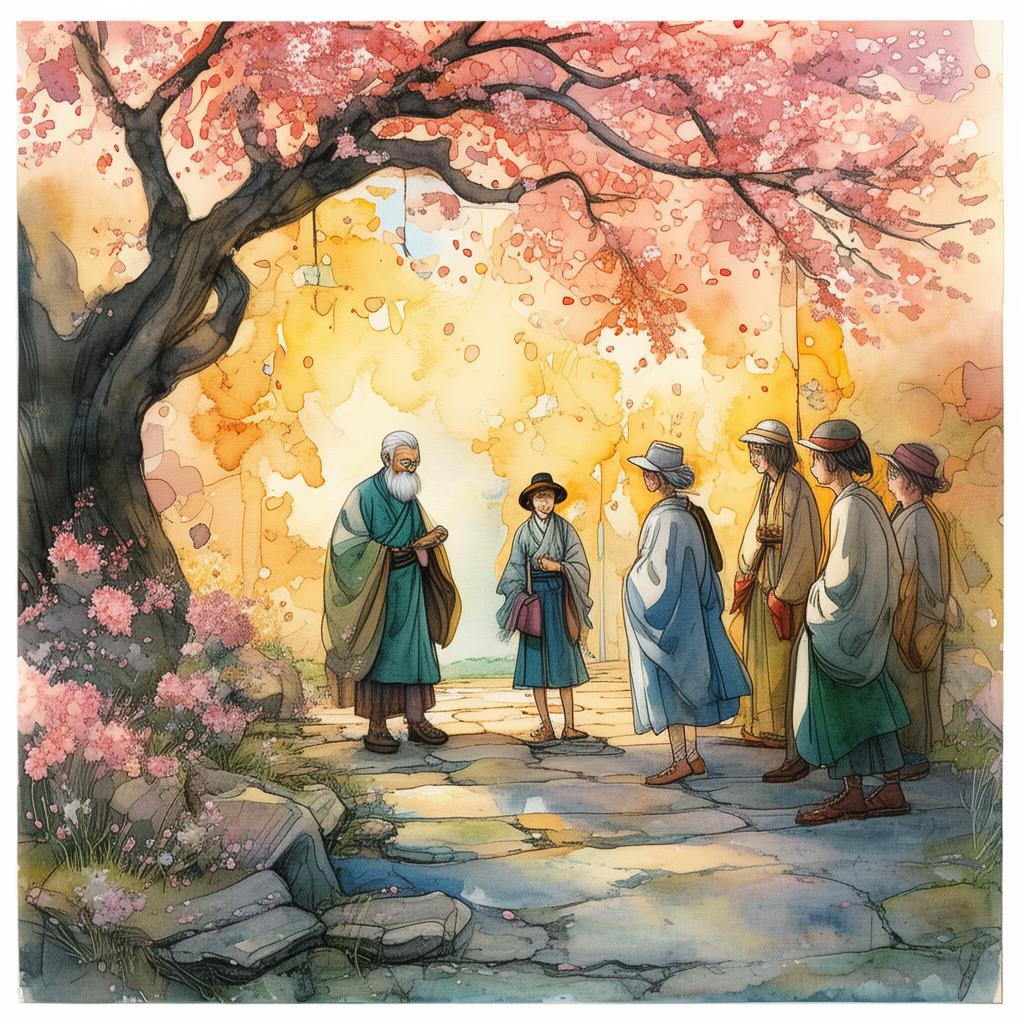The Master of Colors and the Forbidden Script
In the verdant valleys and towering mountains of the Painted Kingdom, there lived a painter named Lin. His brush was said to have the power to bring life to the inanimate and to capture the essence of the most fleeting of moments. His name was whispered in reverence, and his works adorned the walls of the royal palace, each stroke a testament to his unparalleled skill.
Lin was known for his ability to paint not just landscapes and portraits, but also emotions and destinies. It was said that his brush could change the very air around it, infusing the world with colors that could make joyous moments eternal and sorrowful ones poignant.
One day, as Lin was working on a mural depicting the kingdom's history, he stumbled upon a mysterious scroll, hidden beneath the floorboards of his studio. The scroll was unlike any he had ever seen, its surface not made of paper but a shimmering, iridescent fabric that seemed to change color with the light.
Curiosity piqued, Lin carefully unrolled the scroll. The script was written in a language he had never encountered, filled with symbols that seemed to dance and pulse with life. The text spoke of the kingdom's origins, a tale of creation and the power of the five colors: Red, Yellow, Blue, Green, and Black.
As Lin read the scroll, he was drawn to a passage that spoke of the "Forbidden Script," a piece of writing that held the secret to the kingdom's destiny. It was said that those who could decipher the script would hold the power to control the very essence of life and death within the Painted Kingdom.
Intrigued and driven by a desire to uncover the truth, Lin set out on a journey to find the answers the scroll held. His quest led him through the labyrinthine alleys of the Painted Kingdom, into forbidden temples, and through treacherous landscapes. Along the way, he encountered allies and adversaries, each with their own agendas and secrets.
One of his most significant encounters was with a wise old sage who had seen the scroll and knew of its power. The sage warned Lin that the Forbidden Script was not to be taken lightly, for it was a double-edged sword. It could bring prosperity and peace to the kingdom, but it could also lead to its downfall.
As Lin delved deeper into the script, he discovered that it was not just a story of creation, but also a tale of betrayal and redemption. The kingdom's founding king, a great painter himself, had been betrayed by his closest advisors, who sought to use the script's power for their own gain.
The advisors had hidden the script's final piece, a mysterious symbol known as the "Heart of the Canvas," which could only be found in the heart of the kingdom's most ancient forest. Lin realized that he must find this symbol to complete the script and prevent it from falling into the wrong hands.
His journey took him to the heart of the forest, where he encountered a group of bandits who claimed to be the guardians of the Heart of the Canvas. After a tense standoff, Lin managed to win their trust and was granted access to the symbol.
With the Heart of the Canvas in his possession, Lin returned to the sage, who helped him decipher the final passage of the script. It revealed that the kingdom's destiny was tied to the balance of the five colors. If the balance was disturbed, the kingdom would fall into chaos.
Lin returned to the kingdom with the knowledge he had gained. He called upon the people to come together and work towards maintaining the balance of the colors. The kingdom's leaders and citizens responded, and a new era of harmony and prosperity began.
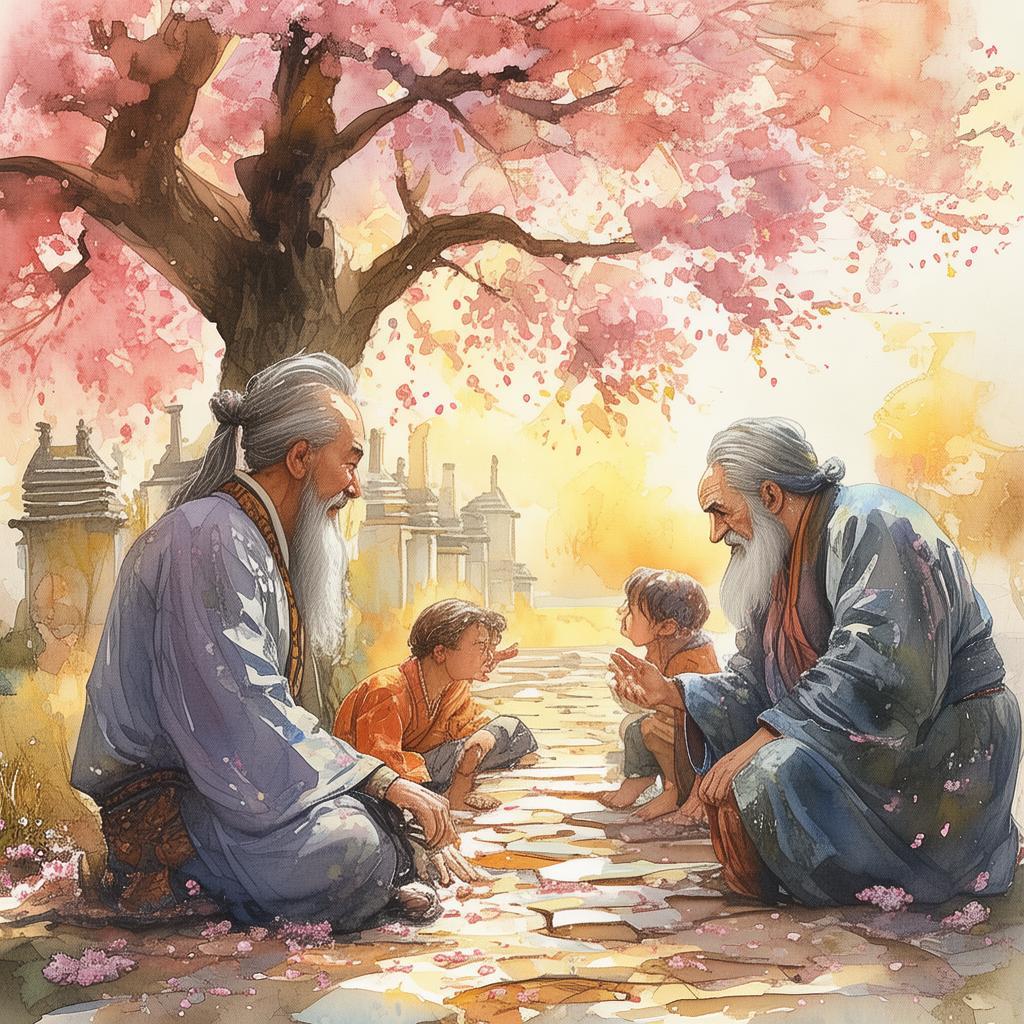
However, Lin knew that the power of the Forbidden Script was still a threat. He decided to hide the scroll and the Heart of the Canvas in a secret location, ensuring that they would remain safe and out of reach from those who might misuse their power.
The Painted Kingdom flourished, and Lin's name was etched into history as the painter who had saved the kingdom from the brink of destruction. His story became a legend, one that spoke of the power of destiny, the importance of balance, and the courage to face one's fate.
In the end, Lin realized that his true masterpiece was not the paintings he had created, but the tapestry of life he had woven in the kingdom. His legacy was not in the colors he had painted, but in the colors of life itself, which he had helped to restore.
✨ Original Statement ✨
All articles published on this website (including but not limited to text, images, videos, and other content) are original or authorized for reposting and are protected by relevant laws. Without the explicit written permission of this website, no individual or organization may copy, modify, repost, or use the content for commercial purposes.
If you need to quote or cooperate, please contact this site for authorization. We reserve the right to pursue legal responsibility for any unauthorized use.
Hereby declared.
